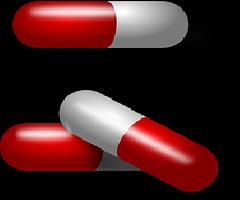These are called Intravenous Fluids and are generally not just ordinary solutions. Their purposes mainly are for fluid and electrolyte balance as the body contains electrolytes (minerals in layman’s term) with just the appropriate amount. When the body has excess or lack of minerals, the solutions are the Intravenous Fluids to compensate and help in the homeostasis of the body.
Note also that IVFs have different types and specific uses thereby giving you the idea that doctors do not only use one type of IVF to all patients of different cases.
The types of Intravenous Fluid Solutions
Through reading the labels in the
IVF, you can be able to classify the fluid if it is Isotonic, Hypotonic, Hypertonic, or Colloid Solution. You can also know the uses of each type.- Isotonic solutions- These solutions have the same osmolality as that of blood plasma (a component of the blood which is the clear yellow fluid). It is the controlled type of all the IVF solutions. These fluids are used to treat dehydration, alkalosis, vomiting, ketoacidosis, burns and diarrhea.
Examples: 0.9 Sodium Chloride (normal saline), Lactated Ringer’s solution, 5% dextrose in water (D5W), and blood components.
- Hypotonic solutions- Solutions which is less concentrated than the blood plasma and it contains more water than particles. This can be used to dilute plasma, a treatment option for clients with edema (swelling caused by excessive
fluid) and kidney disease.
Examples: 0.45 Saline, 0.5 Sodium Chloride, 0.33 Sodium Chloride
- Hypertonic solutions- As the opposite of hypotonic solutions, these are more concentrated than the blood plasma. It also increases plasma’s solute concentration. Its main purpose is to balance the concentration of fluids and electrolytes across fluid compartments.
Examples: 5% Dextrose in normal saline, 10% dextrose in water, 3% Sodium Chloride, 25% Albumin, TPN solutions
- Colloid Solutions- Substances in this solution are hypertonic and weighs in large molecules. When hooked, these pull water from the interstitial space. Generally used as Plasma Volume Expander.
Examples: Plasmagel, Polygeline, Plasmanate, Dextran, Hespan, Salt-poor albumin
After knowing the types and examples, check the label and distinguish what type of Intravenous Solution is. Note also that in some hospitals, IVF bottles have a color coding, purposely to avoid dispensing the wrong bottle by the pharmacist and even prevent drug errors by the nurse.One example is when the color is green, it is clearly to be understood that the IVF is 0.9% Sodium Chloride falling in the category of Isotonic solutions.









